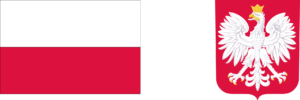The Dutch government is sketching out a new migration framework for Ukrainians who arrived in the Netherlands after Russia’s full-scale invasion, signalling a shift from emergency protection towards a “return-oriented” long-term policy. The core idea is that when the EU’s Temporary Protection Directive (TPD) for people fleeing Ukraine expires in March 2027, Ukrainians in the Netherlands would move to a special national temporary status that both narrows social entitlements and, in the longer run, nudges people towards going back to Ukraine once conditions allow.
According to reports based on proposals from the Dutch Ministry for Asylum and Migration, the plan would create a new, time-limited residence category specifically for Ukrainians currently covered by EU temporary protection. When the EU scheme ends in 2027, this status would replace it, rather than Ukrainians automatically having to file individual asylum claims. The government’s stated logic is twofold: to prevent a sudden wave of asylum applications that could overwhelm the national system, and to keep a clear distinction between war-related temporary protection and classic refugee status.
The new status would also come with stricter financial rules. Under the proposal, Ukrainians who are employed would be expected to cover their own rent and health-insurance contributions, instead of relying on largely free municipal accommodation and publicly funded insurance. Those without work would still be able to apply for social assistance, but support would be less automatic than under the current protection regime. Dutch and Ukrainian media stress that the government’s goal is to reduce the budgetary cost of hosting Ukrainians and to avoid creating incentives to remain in the Netherlands indefinitely once the war is over.
At the same time, the plan explicitly frames this temporary status as a bridge back to Ukraine. It is meant to keep Ukrainians in a legally safe position while the war continues, yet to make clear that, politically, the preferred end point is “sustainable return” rather than long-term settlement. The Dutch government’s official communication on its long-term policy for displaced Ukrainians underlines that it wants to “do everything possible to support displaced persons who wish to return sustainably to Ukraine when circumstances allow”, including measures to maintain their ties with home and to help them contribute to reconstruction.
This national debate takes place against a broader European backdrop. In June 2025, EU interior ministers agreed to prolong temporary protection for refugees from Ukraine until 4 March 2027, giving more than four million people across the bloc legal certainty for the next two years. At the same time, the European Commission has been clear that the focus must now move to an “orderly transition” away from emergency status, combining integration measures for those who will stay with voluntary-return programmes and better information on options for going back.The Dutch initiative is one of the first concrete national attempts to translate this EU-level thinking into detailed law.
The numbers involved are significant by Dutch standards. Around 120,000 Ukrainians currently live in the Netherlands under temporary protection, and more than 60 percent of them are in work. Municipal shelters, originally opened as emergency facilities, are increasingly full, and mayors have been warning for months that they are running out of space. Earlier in 2025, the Minister for Asylum and Migration already suggested that Ukrainian men with stable jobs should start arranging their own housing rather than remaining in collective accommodation, again signalling that the era of open-ended, fully subsidised reception is coming to an end.
Politically, the proposal tries to balance three tensions. First, there is a moral and legal obligation to protect people fleeing a war that is still ongoing; forced returns to Ukraine are not on the table as long as the security situation remains dangerous. Second, the Netherlands faces the practical constraints of housing shortages, pressure on local services and a highly polarised domestic debate on migration. Third, both Dutch and EU institutions want to avoid a scenario in which, on the day temporary protection expires, hundreds of thousands of people across the Union suddenly enter national asylum systems designed for much smaller numbers. A bespoke temporary status, with clearer end-points and slightly tougher conditions, is seen in The Hague as one way out of this trap.
For Ukrainians themselves, the plan raises difficult strategic questions. Those who are already integrated into the labour market, paying taxes and seeing their children progress through Dutch schools may view the new rules as a warning that their stay is not meant to become permanent, even if they are formally allowed to remain for some years beyond 2027. Others, especially those in more precarious situations, may worry about losing access to municipal housing or facing higher personal costs. Much will depend on the exact design of the future status—its duration, the rights it confers, and whether, in exceptional cases, it can be converted into a longer-term residence permit for people who cannot realistically return.
What is clear is that the Netherlands is moving from crisis management to long-term structuring of Ukrainians’ presence. The new plan links social entitlements more closely to employment, narrows the path to permanent settlement, and embeds the expectation that, once peace and basic safety are restored, return to Ukraine should be the default outcome. At the same time, it keeps a legal safety net for those who cannot yet go home. In doing so, it offers an early glimpse of how EU countries may try to reconcile solidarity with displaced Ukrainians with the political imperative to eventually normalise their status once the war no longer justifies an open-ended emergency regime.






